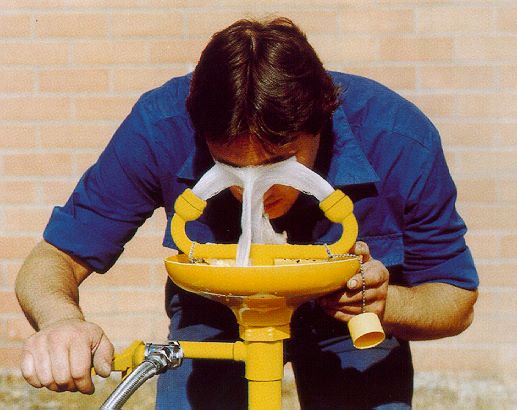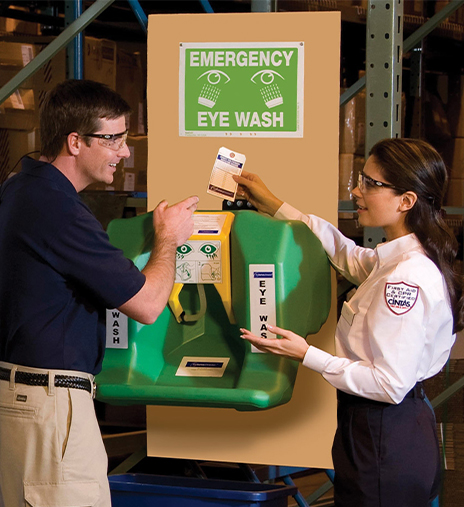Emergency Eye Wash
Let’s hope you never need one but if you do, it’s good to know that your emergency eye wash stations are being inspected and flushed monthly.
If you get a foreign object, dust particle or a chemical splash to your eye, an emergency eyewash station is the most important initial step in first-aid treatment. Chemical burns to the eye are among the most urgent of emergencies.
An eyewash/shower is required if
- The Material Safety Data Sheet indicates a chemical in use is caustic, toxic, or corrosive.
- The MSDS informs that serious eye damage may result.
- Warnings such as “causes chemical burns” or “causes permanent eye damage” are posted on container labels.
Eyewash/showers in addition must have the following features:
- Pure clean water
- Pure clean water
- Constant water flow rate for a full 15 minutes
- Highly visible markings and signs
- Unobstructed access

Accessibility:
The single most important treatment for chemically-burned eyes is copious irrigation within seconds of injury. This means that victims should not have to climb over or around obstacles to find the eyewash station. Make sure there is clear access to the station.
Clean, Functional Equipment:
Permanent plumbed stations need to be inspected as well as portable wash stations. Portable units also need an anti-bacterial additive to ensure proper water sanitation. Portable eyewash stations should be flushed and refilled every three months. Flushing with any water is better than none, but purified water reduces potential for secondary eye infections.

Training in Proper Use:
Employees who are exposed to possible chemical splashes must know in advance how to use an eyewash station properly:
Immediately after the accident, flood the eye with water or eyewash solution, using fingers to keep the eye open as wide as possible. Water may be colder than body temperature, which can be uncomfortable, but it is imperative to irrigate for the recommended period of time.
Roll the eyeball as much as possible, to remove any loose particles retained under the eyelids. Do not put anything except water into the eyes to remove particles.
The eyes should be irrigated for at least 15 minutes, and the victim transported to a medical facility immediately. Continue irrigation of eyes during transport. The best way to accomplish this may be to have a portable eye-wash system ready, that can be carried along.
It’s easy to forget about eye-wash stations or showers until they are needed in an emergency.
Remember to inspect the stations monthly, don’t let it get covered with dust. It could save your sight!